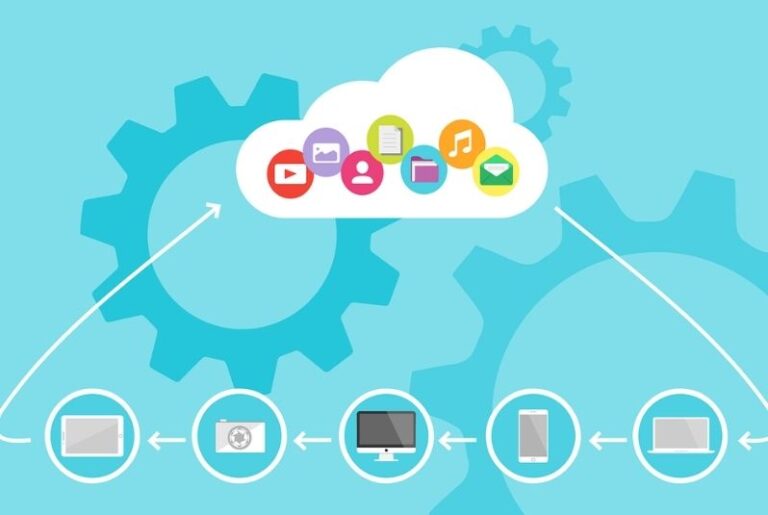Cloud computing has proved to be one of the most promising technologies out there. Most of the companies out there are increasing their investment in the cloud and currently, more than 28% of the IT budget of most of the companies is dedicated to the cloud. In addition to this, around 70 percent of the organizations out there have at least one application on the cloud. All these figures might make you feel like cloud computing is going to continue its dominance in the future as well but there is another side of cloud computing that most of you haven’t analyzed yet.
You must be aware of the fact that the world of technology keeps on evolving at a very fast pace and what you are using now deemed as the latest technology might become outdated in just a couple of years. Well, the same thing has started happening with the cloud as well. Many people are saying that cloud computing is on the way to being overthrown.
The rise of innovative technologies like 5G and IoT has made way for a new and more effective technology platform than cloud and it is being called edge computing.
What is edge computing?
According to the definition given by Gartner, edge computing is basically “a part of a distributed computing topology in which information processing is located close to the edge - where things and people produce or consume that information.”
This definition of edge computing might sound confusing to many people, especially to those who aren’t familiar with technological jargon. So, in layman language, edge computing brings both data storage and computation closer to all the devices where it is gathered.
This simply means that in edge computing, the user will not have to rely on a central location that is located hundreds or maybe thousands of miles away. This type of approach has been mainly adopted to deal with the real-time data that suffers from the issue of latency, we will discuss the latency part at length later in the blog.
We can say that the influx of IoT devices and the proliferation of 5G platforms have acted as a springboard for edge computing. Modern-day technologies like IoT are being used to connect things to the internet and then sending data back to the cloud or receiving data from the cloud. And you should know that most of the IoT based devices produce a gigantic amount of data while functioning.
What is cloud computing?
Cloud computing is basically the delivery of different types of computing services like databases, servers, storage, analytics, and software over the internet in order to offer the user economies of scale and more flexible resources.
In a cloud model, you only pay for the cloud services that you use and that’s why it helps in lowering down the operational cost to a certain level. By using cloud computing, users are able to scale up and scale down their cloud services with ease. There are many different applications of cloud being used in the modern era like cloud app testing and development, cloud backup, cloud storage, cloud hosting, and much more.
Edge computing vs cloud computing
Cloud computing is slower
If you try to fit the modern-day cloud computing platform in the advanced Artificial Intelligence platform, you will realize that cloud computing is very slow. This is one of the main reasons why the use of cloud computing for deterministic applications like autonomous vehicle piloting and real-time securities market forecasting has been put down.
But when the processors will be stationed in data centers that are small in size, especially closer to the location where they are used then this will open up a completely new market for different types of computing services and this is what edge computing is going to offer to the world.
When you consider the IoT environment where data collecting appliances are distributed widely, in such a scenario, keeping processors closer to the cluster of these appliances will not only enhance the processing time but will also make real-time analytics feasible on a higher level.
The biggest issue of latency
When computer X needs to ask computer Y for taking an action then the delay perceived by the user of computer X is what latency is. This significant issue will be resolved by edge computing since edge computing thrives on the speed of light.
Most of the voice assistants that you use for resolving your request functions on the cloud and you should know that the roundtrip time is easily noticeable in this case. First of all, your Echo will have to deal with processing your speech, and then it will send a compressed representation of it to the cloud platform. After that, the cloud platform will start working on uncompressing the representation sent by the Echo and this may involve piping an API as well. Finally, the cloud will send you the answer which will be delivered by Echo. Well, this surely involves a lot of processes and it is time-consuming as well.
This is where edge computing is going to be very efficient and effective. It is being said that Amazon has started working on a particular type of AI chip for Alexa. This will allow Amazon to do more processing on the speaker rather than sending the data to the cloud and then receiving it. This will also mean that your Echo will no longer need to rely on the cloud computing platform. In addition to this, you will get quicker answers and you will also be able to maintain a better level of privacy as well.
The increasing operational cost
If you analyze the whole cloud computing model, you will come to the conclusion that bandwidth, connectivity, data migration, and latency features are proving to be a bit expensive for all the users. But this inefficiency of cloud computing has been resolved by edge computing in a smart manner. Since edge computing has low latency and a low bandwidth requirement, it will prove to be less costly for the users.
With the implementation of edge computing, a continuum is created between the cloud and the device and this type of approach can manage a gigantic amount of data without any hassle. There will be no need for any type of expensive bandwidth in edge computing because there will be no need of sending a large amount of data to the cloud.
How edge computing is the future?
With the rise of advanced technological solutions like IoT and 5G, edge computing will have a much bigger impact on the world in the upcoming future. By taking advantage of edge computing, firms will be able to easily widen the network services into all those areas that were out of reach because of the traditional architecture. By the end of 2023, 5G will cover around one-fifth of all mobile traffic data and almost 25% of the user cases will be totally dependent upon edge computing capabilities.
If analyze the market of IoT, you will realize that the number of IoT devices is increasing at a very fast pace. According to Gartner, the number of IoT devices will increase to 22 billion by the end of 2025 and because of this, the use of edge computing is going to keep on increasing in the upcoming years. Thanks to the increasing demand for quicker, efficient content delivery and services, firms will need to improve their current edge networks.
Because of the rise of technologies like IoT and 5G, the global edge computing market is being expected to reach around $6.72 by the end of 2022. A major portion of the 5G revenue potential will be sourced from IoT services and enterprise and most of it will rely on edge computing.
Edge computing is going to make the world much better and it will break the limitations and boundaries set by cloud computing for the upcoming era. The future of network infrastructure is not going to rely on the cloud for a longer period of time as edge computing will take its place and allow the world to invest in a much more advanced, cost-effective, and most importantly, lightning-fast solution. Connect with Saffron Tech to progress into the future with their top of the class edge computing services.
Subscribe to Saffron Tech
Explore your marketing zen with our newsletter! Subscribe now.




